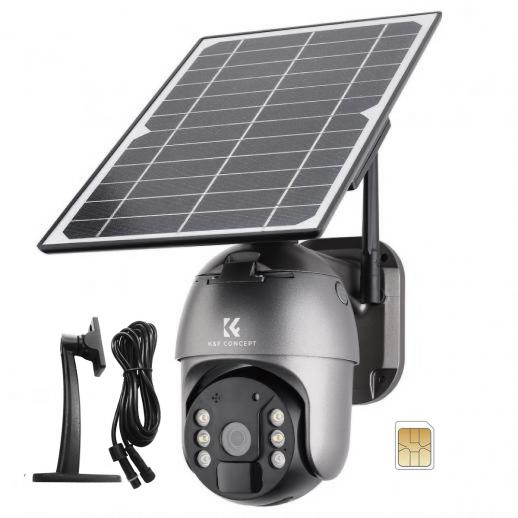How To Wire Surveillance Camera?
Wiring a surveillance camera system can seem like a daunting task, especially for those who are not familiar with electrical work or security systems. However, with the right guidance and tools, it is a task that can be accomplished by most DIY enthusiasts. This article will provide a comprehensive guide on how to wire a surveillance camera, covering everything from planning and preparation to installation and troubleshooting.

Planning and Preparation
Before you start wiring your surveillance camera, it is crucial to plan and prepare adequately. This step will save you time and effort in the long run and ensure that your system functions correctly.
1. Determine Your Needs
First, identify the areas you want to monitor and the type of surveillance cameras you need. Consider factors such as:
- Coverage Area: How large is the area you need to monitor?
- Camera Type: Do you need indoor or outdoor cameras? Bullet or dome cameras?
- Resolution: What level of detail do you require?
- Night Vision: Do you need cameras that can record in low light conditions?
2. Choose the Right Equipment
Based on your needs, select the appropriate cameras and recording equipment. You will need:
- Cameras: Choose cameras that meet your requirements.
- DVR/NVR: A Digital Video Recorder (DVR) for analog cameras or a Network Video Recorder (NVR) for IP cameras.
- Cables: Coaxial cables for analog cameras or Ethernet cables for IP cameras.
- Power Supply: Ensure you have a reliable power source for your cameras.
- Connectors and Tools: BNC connectors for coaxial cables, RJ45 connectors for Ethernet cables, a crimping tool, and a drill.
3. Plan the Cable Routes
Plan the routes for your cables carefully. Consider the following:
- Shortest Path: Choose the shortest and most direct path to minimize cable length.
- Avoid Interference: Keep cables away from electrical lines and other sources of interference.
- Accessibility: Ensure that cables are accessible for maintenance and troubleshooting.
Installation
Once you have planned and prepared, you can proceed with the installation. Follow these steps to wire your surveillance camera system:
1. Mount the Cameras
Start by mounting the cameras in their designated locations. Use the following guidelines:
- Height: Mount cameras high enough to avoid tampering but low enough to capture clear images.
- Angle: Adjust the angle to cover the desired area.
- Secure Mounting: Ensure that the cameras are securely mounted to prevent them from being dislodged.
2. Run the Cables
Next, run the cables from the cameras to the recording device. Follow these steps:
- Drill Holes: Drill holes in walls or ceilings as needed to pass the cables through.
- Pull Cables: Pull the cables through the holes and route them to the recording device.
- Label Cables: Label each cable to identify which camera it is connected to.
3. Connect the Cables
Once the cables are in place, connect them to the cameras and the recording device:
- Analog Cameras: Connect the coaxial cable to the camera using a BNC connector. Connect the other end to the DVR.
- IP Cameras: Connect the Ethernet cable to the camera using an RJ45 connector. Connect the other end to the NVR or a network switch.
4. Power the Cameras
Provide power to the cameras using one of the following methods:
- Separate Power Supply: Use a separate power adapter for each camera.
- Power over Ethernet (PoE): If using IP cameras, you can use PoE to provide power and data through a single Ethernet cable.
Configuration and Testing
After wiring and connecting the cameras, you need to configure and test the system to ensure it is working correctly.
1. Configure the Recording Device
Set up the DVR or NVR by following the manufacturer's instructions. This typically involves:
- Setting the Date and Time: Ensure the correct date and time for accurate recordings.
- Configuring Recording Settings: Choose continuous recording, motion detection, or scheduled recording based on your needs.
- Network Configuration: If you want remote access, configure the network settings and set up port forwarding on your router.
2. Test the Cameras
Test each camera to ensure it is functioning correctly:
- Check the Video Feed: Verify that the video feed from each camera is clear and covers the desired area.
- Adjust Settings: Adjust the camera settings, such as brightness, contrast, and motion detection sensitivity, as needed.
- Test Remote Access: If you have set up remote access, test it to ensure you can view the cameras from your smartphone or computer.
Troubleshooting
If you encounter any issues during the installation or testing, follow these troubleshooting tips:
1. No Video Feed
If you are not getting a video feed from a camera:
- Check Connections: Ensure all cables are securely connected.
- Power Supply: Verify that the camera is receiving power.
- Cable Integrity: Check the cable for any damage or breaks.
2. Poor Video Quality
If the video quality is poor:
- Camera Lens: Clean the camera lens to remove any dirt or smudges.
- Lighting Conditions: Ensure adequate lighting in the monitored area.
- Interference: Check for sources of interference and reroute cables if necessary.
3. Remote Access Issues
If you cannot access the cameras remotely:
- Network Configuration: Verify the network settings on the DVR/NVR.
- Port Forwarding: Ensure port forwarding is set up correctly on your router.
- Firewall Settings: Check your firewall settings to ensure they are not blocking access.
Wiring a surveillance camera system requires careful planning, the right equipment, and attention to detail. By following the steps outlined in this guide, you can successfully install and configure your surveillance cameras, providing enhanced security for your home or business. Remember to test the system thoroughly and troubleshoot any issues to ensure optimal performance. With a well-installed surveillance system, you can have peace of mind knowing that your property is under constant watch.
